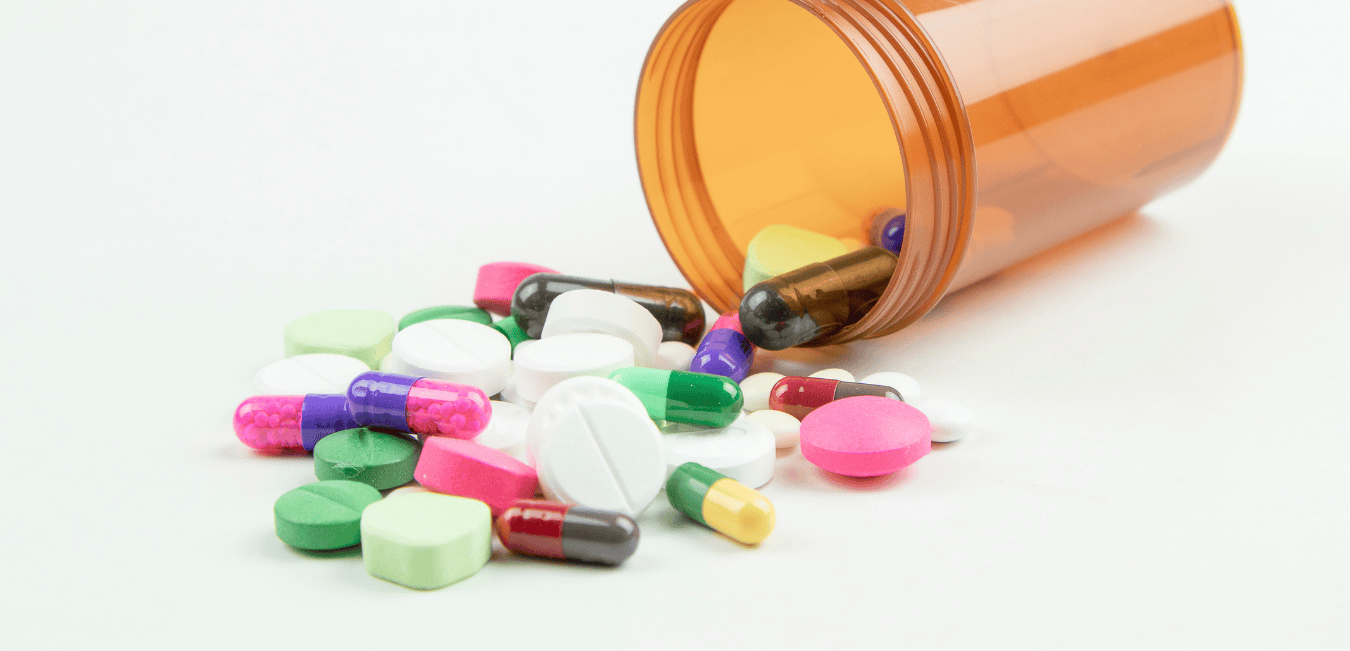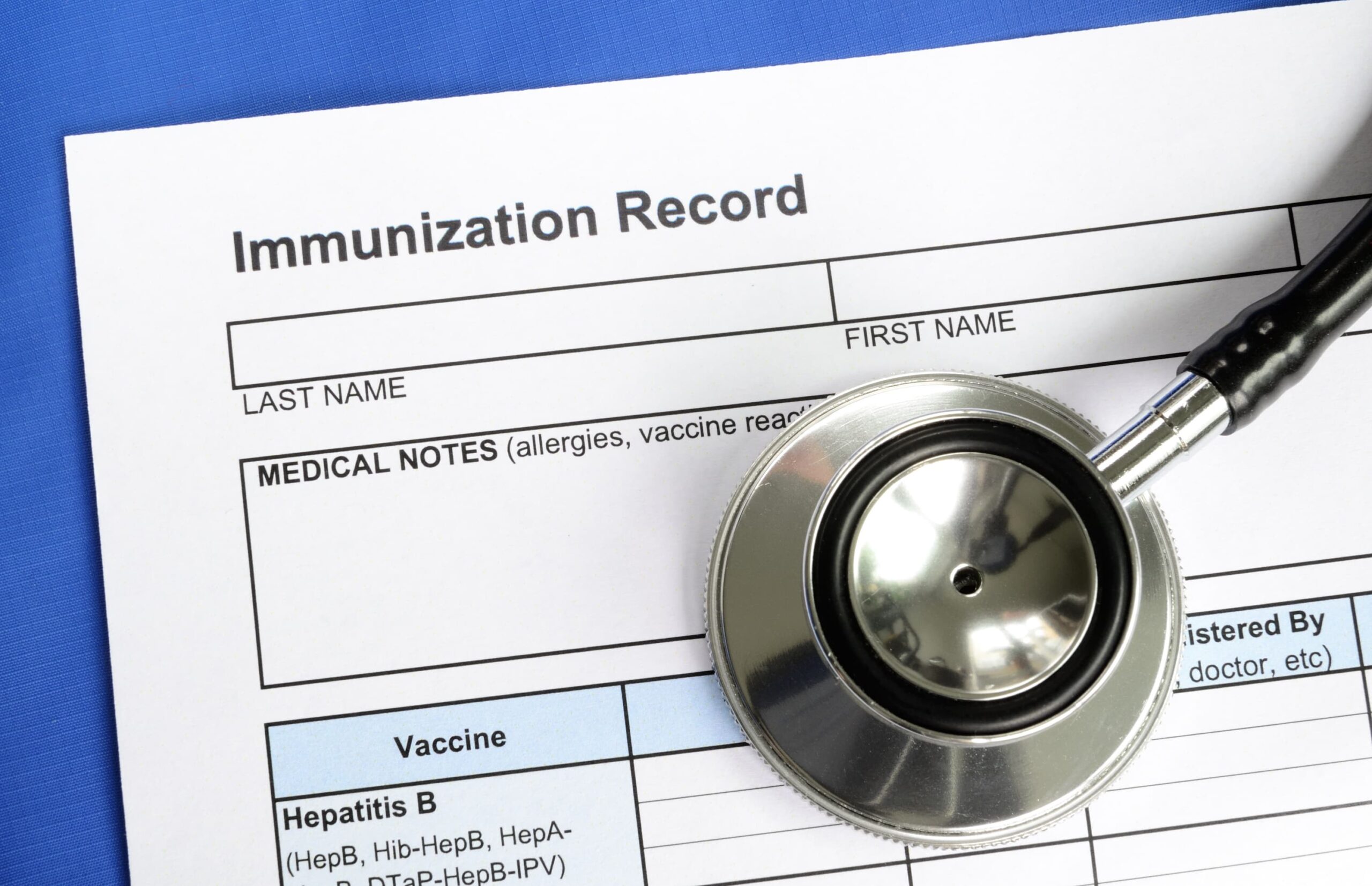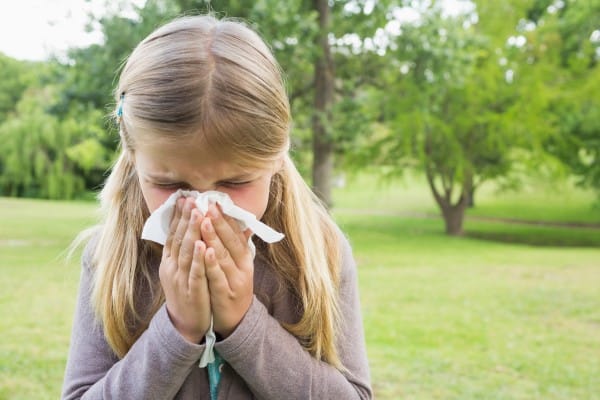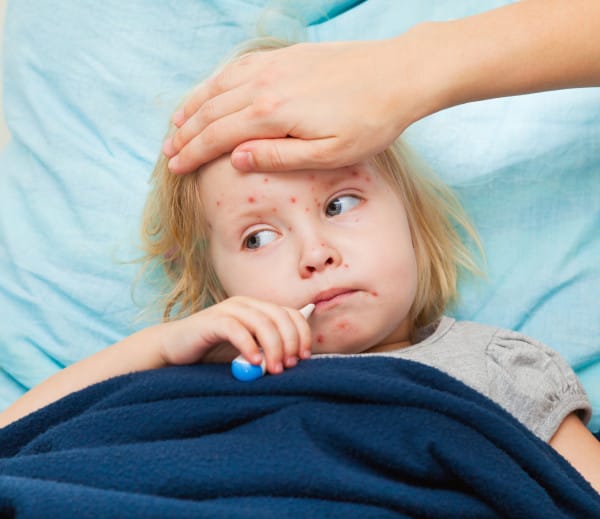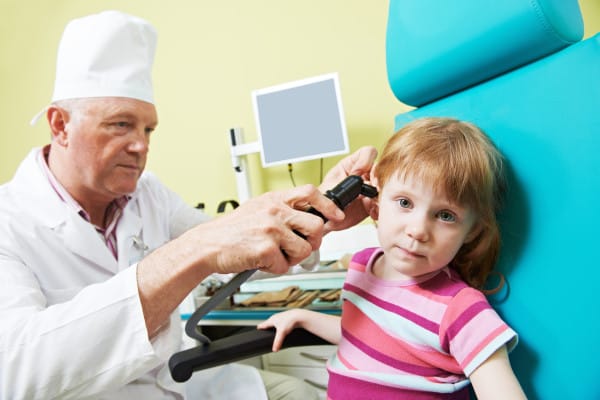Antibiotics are sometimes an unavoidable part of modern life. We use them because they have made previously life-threatening infections relatively easy to recover from, but they come with a host of side effects. In this article, I’ll cover the most important antibiotic side effects, how to recognize an antibiotic allergic reaction, how and why to use probiotics while taking antibiotics, and my favorite herbs to protect the body while taking antibiotics.
Unfortunately, it is estimated that ⅓ of pediatric antibiotic prescriptions are unnecessary. At the end of this article, I’ll also cover some ideas for avoiding unnecessary antibiotic use as a parent.
It is estimated that ⅓ of pediatric antibiotic prescriptions are unnecessary.
Consequences Of Antibiotic Use
Antibiotics are strong medications which can have toxic effects on the gut, liver, kidneys, neurological system, heart, immune system and skin. They exert these negative effects partly through direct effects on the body and partly through the effect of a disrupted microbiome.
Antibiotics also have a high rate of allergic reaction and account for ⅓ to ½ of all pediatric emergency room visits for adverse drug reactions.
Recognizing An Allergic Reaction To Antibiotics
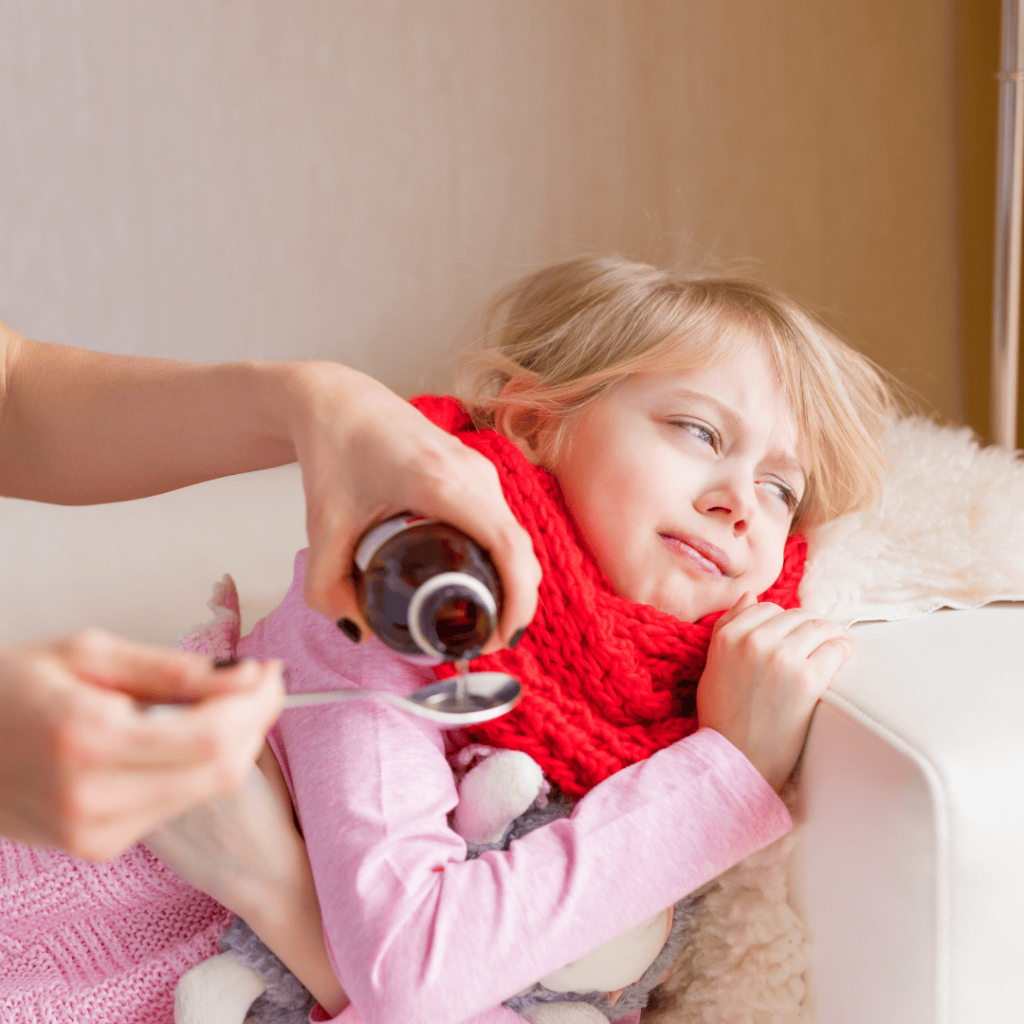 Antibiotics are a common allergen in kids, especially penicillin. Symptoms of an antibiotic allergic reaction may include hives, wheezing, and difficulty breathing. In some cases, antibiotics can even cause a life-threatening anaphylactic reaction. Symptoms of anaphylaxis include difficulty breathing, wheezing, coughing, trouble swallowing, tight chest and throat, nasal congestion, sneezing, runny nose, rash, hives, pale, blue, or gray skin color, swollen lips or tongue, vomiting, diarrhea, lightheadedness, fainting, dizziness, lethargy, agitation, confusion, drowsiness, and “feeling of doom”. In infants, symptoms to look for include: increased sleepiness, sudden drooling, inconsolable crying, fussiness, or irritability.
Antibiotics are a common allergen in kids, especially penicillin. Symptoms of an antibiotic allergic reaction may include hives, wheezing, and difficulty breathing. In some cases, antibiotics can even cause a life-threatening anaphylactic reaction. Symptoms of anaphylaxis include difficulty breathing, wheezing, coughing, trouble swallowing, tight chest and throat, nasal congestion, sneezing, runny nose, rash, hives, pale, blue, or gray skin color, swollen lips or tongue, vomiting, diarrhea, lightheadedness, fainting, dizziness, lethargy, agitation, confusion, drowsiness, and “feeling of doom”. In infants, symptoms to look for include: increased sleepiness, sudden drooling, inconsolable crying, fussiness, or irritability.
It is important to contact a doctor right away for advice if allergic symptoms occur. Mild allergic reactions can often be managed with antihistamines. Difficulty breathing is a medical emergency as are symptoms of anaphylaxis.
Maintaining And Restoring The Microbiome When Using Antibiotics
In order to maintain the microbiome while taking antibiotics, I usually recommend that my patients take a probiotic specifically designed to be taken with antibiotics.* Look for a probiotic that contains Saccharomyces boulardii and Lactobacillus rhamnosus, which have both been shown to reduce antibiotic associated diarrhea and help reduce antibiotic associated dysbiosis. Also look for one that contains strains of bifidobacteria, which are easily killed by antibiotics and need to be replaced.
For best effects, probiotics are taken 8 hours after the antibiotic if on a once per day regime. They are taken 3-4 hours after the antibiotic if on a twice per day regime. And 1-2 hours after the antibiotic if on a 3-4 times per day regime.
The microbiome is strongly impacted by lifestyle, and taking a probiotic alone isn’t enough to assure a healthy gut. I’ve written an extensive article about ways to support a healthy gut and microbiome: How to Heal The Gut (For Kids) – Dr. Green Mom.
*There are some times when a high potency probiotic isn’t a good idea, such as in the case of immune deficiency. As always, consult a doctor for individualized advice.
Protecting The Body While Taking Antibiotics
In addition to allergic reactions, antibiotics can also cause damage to many different organ systems. Luckily, herbal medicines have been studied for their ability to protect the various organ systems against damage by drugs. These are my favorite herbs for organ protection:
- Black Seed Oil has been studied as a protector against drug-induced heart and kidney damage.
- Ginger protects the heart, lungs, stomach lining, and nervous system from damage. It is also strongly anti-inflammatory and helps with recovery.
- Astragalus is a powerful herb that is known to protect the nervous system, blood vessels, liver, and kidneys.
- Corn Silk is a gentle herb which is known to protect and heal the urinary system.
- Hawthorne extract is a well studied medicine for protecting the heart. It also protects the liver.
- Milk Thistle is my favorite liver protector and can also be used to help heal if the liver has been damaged by drugs.
- Medicinal Mushrooms have antibacterial effects that support the action of antibiotics and also work to protect the liver and kidneys. Mushrooms also contain prebiotics needed to help restore the microbiome after antibiotic treatment.
There are many other herbs with known protective abilities. It isn’t important to take every single possible herb that might be helpful but rather to thoughtfully choose which herbs might be most helpful.
Avoiding Unnecessary Antibiotic Use
Unnecessary antibiotic use is a big problem and responsibility to fix that falls mostly on the shoulders of the doctors who prescribe them. However, as parents, there are some things that we can do to avoid unnecessary antibiotic use.
- Ask your doctor if there are alternative treatments to antibiotic use. Sometimes infections are known to resolve themselves with rest and time.
- Don’t push for antibiotics. Research has found that doctors are more likely to prescribe antibiotics if parents request them.
- Don’t save your antibiotics for later. Finish the antibiotics as directed by your doctor. If you have leftover antibiotics, return them to the pharmacy to be disposed of.
Summary
Antibiotics are a life-saving part of modern medicine, but they come with side effects. Probiotics and herbal medicines can be used to prevent and treat the negative consequences of antibiotic use.
References:
Alhassani, R. Y., Bagadood, R. M., Balubaid, R. N., Barno, H. I., Alahmadi, M. O., & Ayoub, N. A. (2021). Drug Therapies Affecting Renal Function: An Overview. Cureus, 13(11), e19924. https://doi.org/10.7759/cureus.19924
Tamma, P. D., Avdic, E., Li, D. X., Dzintars, K., & Cosgrove, S. E. (2017). Association of Adverse Events With Antibiotic Use in Hospitalized Patients. JAMA internal medicine, 177(9), 1308–1315. https://doi.org/10.1001/jamainternmed.2017.1938
Zheng, W., Huang, T., Tang, Q. Z., Li, S., Qin, J., & Chen, F. (2021). Astragalus Polysaccharide Reduces Blood Pressure, Renal Damage, and Dysfunction Through the TGF-β1-ILK Pathway. Frontiers in pharmacology, 12, 706617. https://doi.org/10.3389/fphar.2021.706617
Hannan, M. A., Zahan, M. S., Sarker, P. P., Moni, A., Ha, H., & Uddin, M. J. (2021). Protective Effects of Black Cumin (Nigella sativa) and Its Bioactive Constituent, Thymoquinone against Kidney Injury: An Aspect on Pharmacological Insights. International journal of molecular sciences, 22(16), 9078. https://doi.org/10.3390/ijms22169078
Bauer, K. A., Kullar, R., Gilchrist, M., & File, T. M., Jr (2019). Antibiotics and adverse events: the role of antimicrobial stewardship programs in ‘doing no harm’. Current opinion in infectious diseases, 32(6), 553–558. https://doi.org/10.1097/QCO.0000000000000604
Same, R. G., Hsu, A. J., Cosgrove, S. E., Klein, E. Y., Amoah, J., Hersh, A. L., Kronman, M. P., & Tamma, P. D. (2021). Antibiotic-Associated Adverse Events in Hospitalized Children. Journal of the Pediatric Infectious Diseases Society, 10(5), 622–628. https://doi.org/10.1093/jpids/piaa173
Principi, N., & Esposito, S. (2016). Antimicrobial stewardship in paediatrics. BMC infectious diseases, 16(1), 424. https://doi.org/10.1186/s12879-016-1772-z
Wans, E. M., Ahmed, M. M., Mousa, A. A., Tahoun, E. A., & Orabi, S. H. (2021). Ameliorative effects of corn silk extract on acetaminophen-induced renal toxicity in rats. Environmental science and pollution research international, 28(2), 1762–1774. https://doi.org/10.1007/s11356-020-10588-4
Lovegrove, M. C., Geller, A. I., Fleming-Dutra, K. E., Shehab, N., Sapiano, M., & Budnitz, D. S. (2019). US Emergency Department Visits for Adverse Drug Events From Antibiotics in Children, 2011-2015. Journal of the Pediatric Infectious Diseases Society, 8(5), 384–391. https://doi.org/10.1093/jpids/piy066
Stadlbauer V. (2015). Immunosuppression and probiotics: are they effective and safe?. Beneficial microbes, 6(6), 823–828. https://doi.org/10.3920/BM2015.0065
Kabbani, T. A., Pallav, K., Dowd, S. E., Villafuerte-Galvez, J., Vanga, R. R., Castillo, N. E., Hansen, J., Dennis, M., Leffler, D. A., & Kelly, C. P. (2017). Prospective randomized controlled study on the effects of Saccharomyces boulardii CNCM I-745 and amoxicillin-clavulanate or the combination on the gut microbiota of healthy volunteers. Gut microbes, 8(1), 17–32. https://doi.org/10.1080/19490976.2016.1267890
Szajewska, H., & Hojsak, I. (2020). Health benefits of Lactobacillus rhamnosus GG and Bifidobacterium animalis subspecies lactis BB-12 in children. Postgraduate medicine, 132(5), 441–451. https://doi.org/10.1080/00325481.2020.1731214
Anusiya, G., Gowthama Prabu, U., Yamini, N. V., Sivarajasekar, N., Rambabu, K., Bharath, G., & Banat, F. (2021). A review of the therapeutic and biological effects of edible and wild mushrooms. Bioengineered, 12(2), 11239–11268. https://doi.org/10.1080/21655979.2021.2001183
Khalili, A., Fallah, P., Hashemi, S. A., Ahmadian-Attari, M. M., Jamshidi, V., Mazloom, R., Beikzadeh, L., & Bayat, G. (2021). New mechanistic insights into hepatoprotective activity of milk thistle and chicory quantified extract: The role of hepatic Farnesoid-X activated receptors. Avicenna journal of phytomedicine, 11(4), 367–379. https://doi.org/10.22038/AJP.2020.17281
Soleimani, V., Delghandi, P. S., Moallem, S. A., & Karimi, G. (2019). Safety and toxicity of silymarin, the major constituent of milk thistle extract: An updated review. Phytotherapy research : PTR, 33(6), 1627–1638. https://doi.org/10.1002/ptr.6361
Gillessen, A., & Schmidt, H. H. (2020). Silymarin as Supportive Treatment in Liver Diseases: A Narrative Review. Advances in therapy, 37(4), 1279–1301. https://doi.org/10.1007/s12325-020-01251-y
Cheng, F., Jiang, W., Xiong, X., Chen, J., Xiong, Y., & Li, Y. (2020). Ethanol Extract of Chinese Hawthorn (Crataegus pinnatifida) Fruit Reduces Inflammation and Oxidative Stress in Rats with Doxorubicin-Induced Chronic Heart Failure. Medical science monitor : international medical journal of experimental and clinical research, 26, e926654. https://doi.org/10.12659/MSM.926654
Hamza, A. A., Lashin, F. M., Gamel, M., Hassanin, S. O., Abdalla, Y., & Amin, A. (2020). Hawthorn Herbal Preparation from Crataegus oxyacantha Attenuates In Vivo Carbon Tetrachloride -Induced Hepatic Fibrosis via Modulating Oxidative Stress and Inflammation. Antioxidants (Basel, Switzerland), 9(12), 1173. https://doi.org/10.3390/antiox9121173
Hagag, A. A., Badraia, I. M., El-Shehaby, W. A., & Mabrouk, M. M. (2020). Protective role of black seed oil in doxorubicin-induced cardiac toxicity in children with acute lymphoblastic leukemia. Journal of oncology pharmacy practice : official publication of the International Society of Oncology Pharmacy Practitioners, 26(6), 1397–1406. https://doi.org/10.1177/1078155219897294
